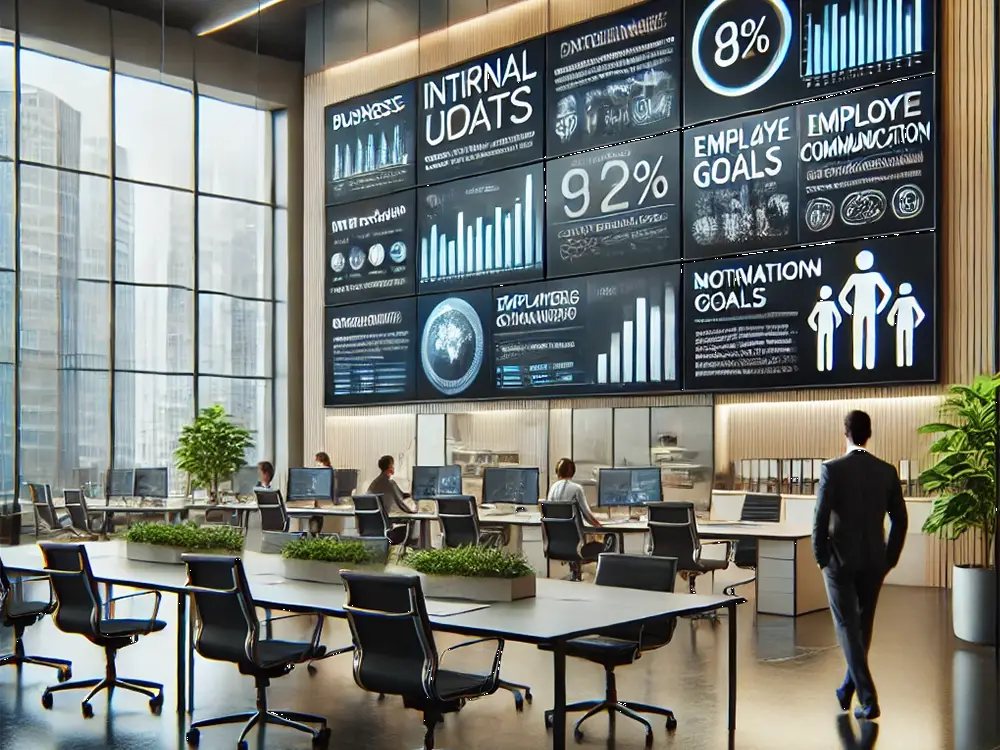How to Choose the Best Digital Signage Solution for Your Business
Introduction
In today’s digital world, businesses across various industries use digital signage to enhance customer engagement, promote products, and streamline communication. However, with so many options, screen types, and features available, choosing the right digital signage solution can feel overwhelming.
The key to making the right choice is understanding your business’s unique needs and selecting a solution that provides ease of use, scalability, and maximum impact. Whether you’re in retail, hospitality, corporate communication, or advertising, a well-chosen digital signage system can significantly improve your marketing efforts and overall customer experience.

Key Factors to Consider When Choosing Digital Signage
Before investing in digital signage, it’s essential to evaluate various factors to ensure it aligns with your business goals. Below are the most important considerations when selecting a digital signage solution:
1. Screen Size & Type – LCD, LED, or Interactive Touchscreen?
The type and size of the digital signage display you choose will depend on its intended purpose and location.
Common Screen Types for Digital Signage:
- LCD Screens – Ideal for indoor environments, such as restaurants, retail stores, and offices. They provide high-resolution visuals at an affordable cost.
- LED Screens – Best for outdoor advertising and large displays, offering high brightness levels and durability for clear visibility in direct sunlight.
- Interactive Touchscreens – Suitable for self-service kiosks, wayfinding displays, and interactive promotions. They improve customer engagement by allowing users to interact with the screen.
Example: A fast-food restaurant might opt for LED digital menu boards, while a shopping mall directory benefits from an interactive touchscreen display for easy navigation.
2. Content Management System (CMS) – Easy Scheduling & Remote Updates
A robust Content Management System (CMS) is essential for effectively managing digital signage content. The right CMS allows businesses to schedule, update, and manage content effortlessly.
What to Look for in a Digital Signage CMS:
- User-friendly interface – Easy-to-use dashboards for updating content.
- Cloud-based management – Enables remote access and updates from anywhere.
- Flexible scheduling – Automate content playback based on time, location, or events.
- Multi-screen control – Manage multiple digital signage screens from a single platform.
Example: A retail chain with multiple locations can remotely update promotional offers on all screens simultaneously using a cloud-based CMS.

3. Connectivity Options – Cloud-Based or USB Plug-and-Play?
Different digital signage solutions offer various connectivity options, each with its own advantages.
Common Connectivity Options:
- Cloud-Based Digital Signage – Best for large-scale businesses that require remote management and frequent content updates.
- USB or Local Storage – Suitable for small businesses with limited content changes. This option is cost-effective and simple but requires manual updates.
- Wi-Fi or LAN Integration – Allows seamless real-time updates for businesses needing instant content changes, such as news displays, stock market updates, or live menus.
Example: A corporate office might use a Wi-Fi-connected display for real-time company announcements, while a small café may prefer a USB-based menu board for occasional updates.
4. Scalability & Expansion – Can It Grow with Your Business Needs?
When choosing a digital signage solution, think about long-term scalability. A system that grows with your business will save costs in the future.
Scalability Considerations:
- Can the system support multiple screens across various locations?
- Does the CMS allow for easy expansion without replacing hardware?
- Is it compatible with third-party integrations, such as POS systems or social media feeds?
Example: A startup clothing brand may initially use a single digital signage display but later expand to multiple locations. Choosing a scalable solution prevents the need for costly replacements.
Best Digital Signage Solutions for Different Businesses
Different industries benefit from digital signage in unique ways. Here are some of the best applications for digital signage based on business type:

Retail Stores – Interactive Displays for Promotions
- Showcase new arrivals, promotions, and sales dynamically.
- Interactive product catalogs for customers to browse inventory.
- Queue management displays to reduce waiting time.
Example: A clothing store can use digital signage displays near fitting rooms to recommend matching accessories or discounts.
Restaurants – Digital Menu Boards for Easy Updates
- Easily update menu items, prices, and promotions.
- Showcase high-quality food images or video content to entice customers.
- Enable contactless ordering via QR code scanning.
Example: A fast-food chain can schedule breakfast, lunch, and dinner menu changes automatically, reducing manual labor.
Corporate Offices – Internal Communication Screens
- Display real-time company announcements and schedules.
- Recognize employee achievements and milestones.
- Show live dashboards for performance tracking.
Example: A tech company can display daily KPIs, employee spotlights, and important announcements using a centralized digital signage system.
Conclusion
Choosing the right digital signage solution requires careful consideration of screen type, content management system, connectivity options, and scalability.
Quick Recap:
- Screen Type – Choose LCD, LED, or interactive touchscreen based on business needs.
- CMS – Ensure the system provides easy scheduling, cloud updates, and remote access.
- Connectivity – Select between USB, Wi-Fi, or cloud-based digital signage.
- Scalability – Opt for a solution that can grow with your business.
By selecting the best digital signage system, businesses can enhance customer engagement, streamline communication, and increase operational efficiency.
If you’re looking for a high-impact, easy-to-manage digital signage solution, explore options that align with your industry and long-term growth plans.




